
NOVEMBER 2005
the death of the schoolchildren in
Balakot
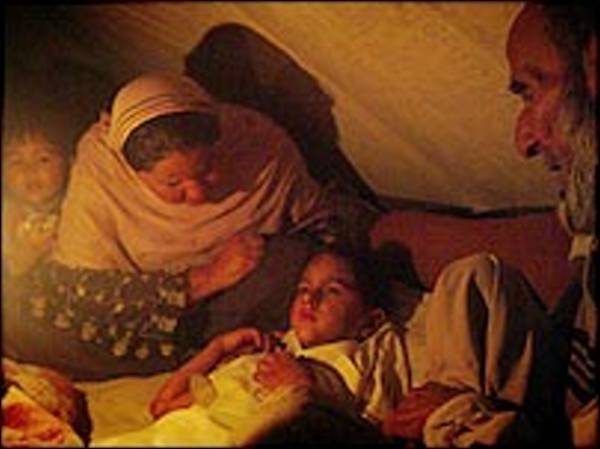
The local people could hear three and even pass drinks to them through a small hole, but they couldn't reach them because they didn't have the right equipment."
"We freed those three but we couldn't find any sign of life in the next pocket. We were about to leave when he cried out.
"That little boy was crushed into a space that fitted him perfectly. The two children on either side were dead. He had his arms around his head and when we pulled him he came out like a cork. None of his limbs had been crushed, otherwise he would have been very hard to extract."
Shameer told his parents that he could hear cries around him in the darkness that followed the collapse of the building. He lay crushed into a ball and unable to move.
He says he heard his 22-year-old teacher, Miss Kenza, shouting that she was alive, but as the hours passed the shouts stopped.
The French doubt that it could have been Miss Kenza who Shameer heard. They believe she died instantly.
"Her body was covering two children," said Mr Mornat. "The first was dead but the second was alive. We think that she died trying to shield them as the building collapsed."
"Shameer told us there was darkness except for one tiny light," said his mother, as his surviving family crowded around him.
"After such sadness I forgot my
dead sons and daughters when I got this one back,"
said his grandfather, 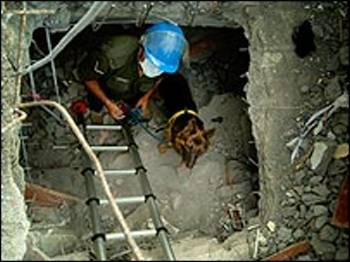 stroking his hair.
stroking his hair.
"He said he drank water under there, but it must be a miracle because there was no water there," said his mother.
Shameer did not sleep throughout his experience, he said. Asked what he thought about in the 63 hours he spent under the rubble, he shook his head.
"For three days I wept for my son," said his mother. "When he was found there was no limit to my joy. The French lifted him out so gently."
On Wednesday a rescue
team from the United Arab Emirates made a further search
of the school as the fathers of children still missing
sat on the hillside above. They did not find any alive.
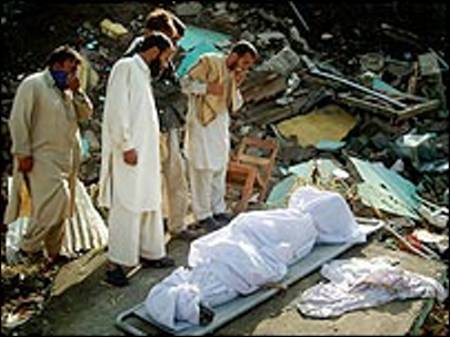
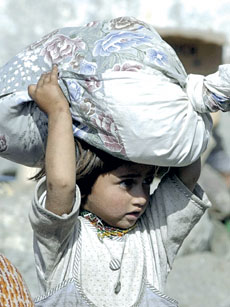
A child refugee seen in Balakot.
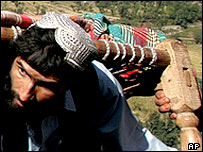
The snow has now arrived on the mountains above Balakot
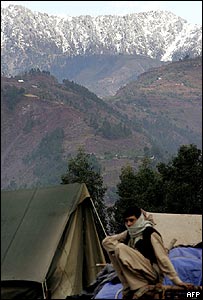
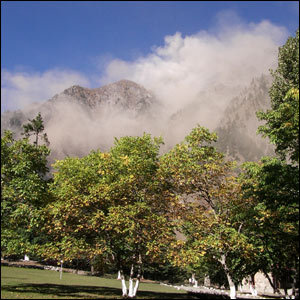
A tourist's photo
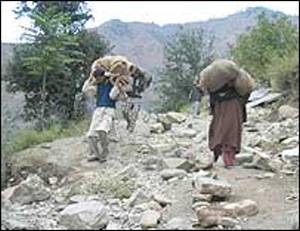
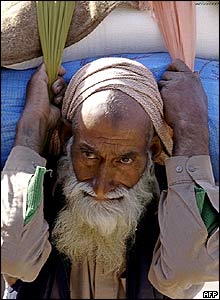

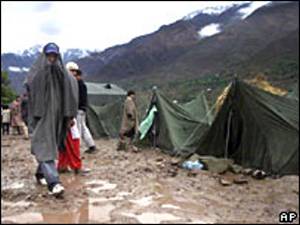
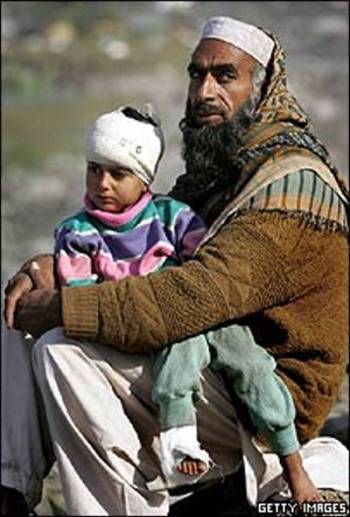
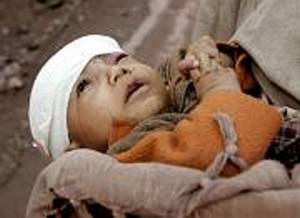
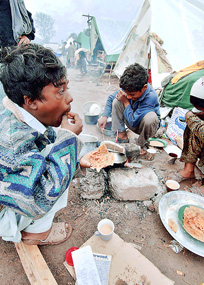
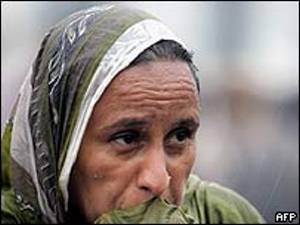
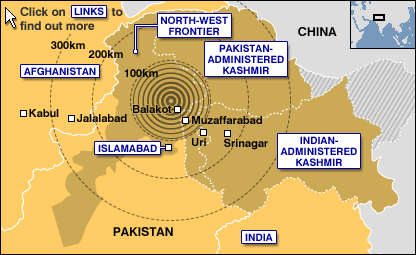
Plan, the international children’s
development agency, has flown helicopters with emergency
supplies to help 15,000 villagers trapped in northern
Pakistan by Saturday’s earthquake.
One survivor commented, “We can survive without food, but we cannot survive with the cold. Please bring tents.”
Plan is delivering emergency supplies to the villages with the help of local businesses and members of the local community. Dr Irfan Ahmed, Plan’s Health Adviser is travelling to Siran to set up medical centres.
Staff will also deliver 2,000 bottles of milk and water, and tents and tarpaulins to communities affected by the earthquake in the Mansehra District.
The district - which Plan has been working in since 1997 - is located near the epicentre of the quake. Staff are extremely concerned at the lack of children they see.
One Plan worker personally witnessed a destroyed high school in Ghari Habibullah (located 20km north east of Mansehra City) where 550 children died. Tassadaque Sha commented, “I helped pull 150 corpses from the rubble. I am worried about the lack of surviving children I have seen.”
However earthquake-proof schools in Plan-supported communities in the region have survived.
Plan is appealing for emergency funds via freephone 0800 526 848 or http://www.plan-uk.org.
ABBOTABAD, 20 October (IRIN) - Survivors in many mountain villages devastated by the 8 October earthquake have demanded tin sheets and tools – not tents – to protect them from winter's ills. "Look, do you think we can survive a winter in a tent, even if it is a strong one? Can we sleep on the ground on plastic sheets when there is deep snow all around?" asked Tariq Habib, who had travelled from the Battagram area to the city of Abbottabad in the North West Frontier Province (NWFP), seeking food, warm clothing, a stove and house-building material for his family. "What we need is tin sheets. They offer much better protection than tents, snow can be shovelled off them easily and we can nail them up over stone walls that we can construct quickly from the heaps of rubble," Tariq added. Relief teams from various organisations have received hundreds of requests for sheets of corrugated steel.
"We are looking at this," said Rehan Latif, who recently led a team from the Human Rights Commission of Pakistan (HRCP) to affected areas in Mansehra. "It seems feasible, as the sheets are light and quite cheap, but they are also bulky, so transport is a bit of an issue." Tin is traditionally used for roofs in many mountain areas of the country, with the sloping roofs allowing snow to slide away. Villagers, who have to cope with winter temperatures as low as minus 20 degrees Celsius, also believe the metal traps the sunlight and helps heat their homes.
Many are reluctant to move to the tent cities being set up in Abbottabad, Islamabad and other locations below the mountain valleys where they live. Fareed Khan, 58, has been living for the past 10 days with his sons and their families amid the rubble of their house in the village of Sarin in the Shinkiari area. "Our family members are still buried beneath the rubble. All we possess in the world – our money, our jewellery, our documents – are in these houses," he told IRIN. "We can't leave them because then these items will be stolen and looted. "We will rebuild these homes ourselves and dig up the rubble. We will bury our children and others who have died with our own hands after we take them out from the debris. Just give us shovels, spades and saws. We have timber all around us, we just need some tin to place over us as roofs."